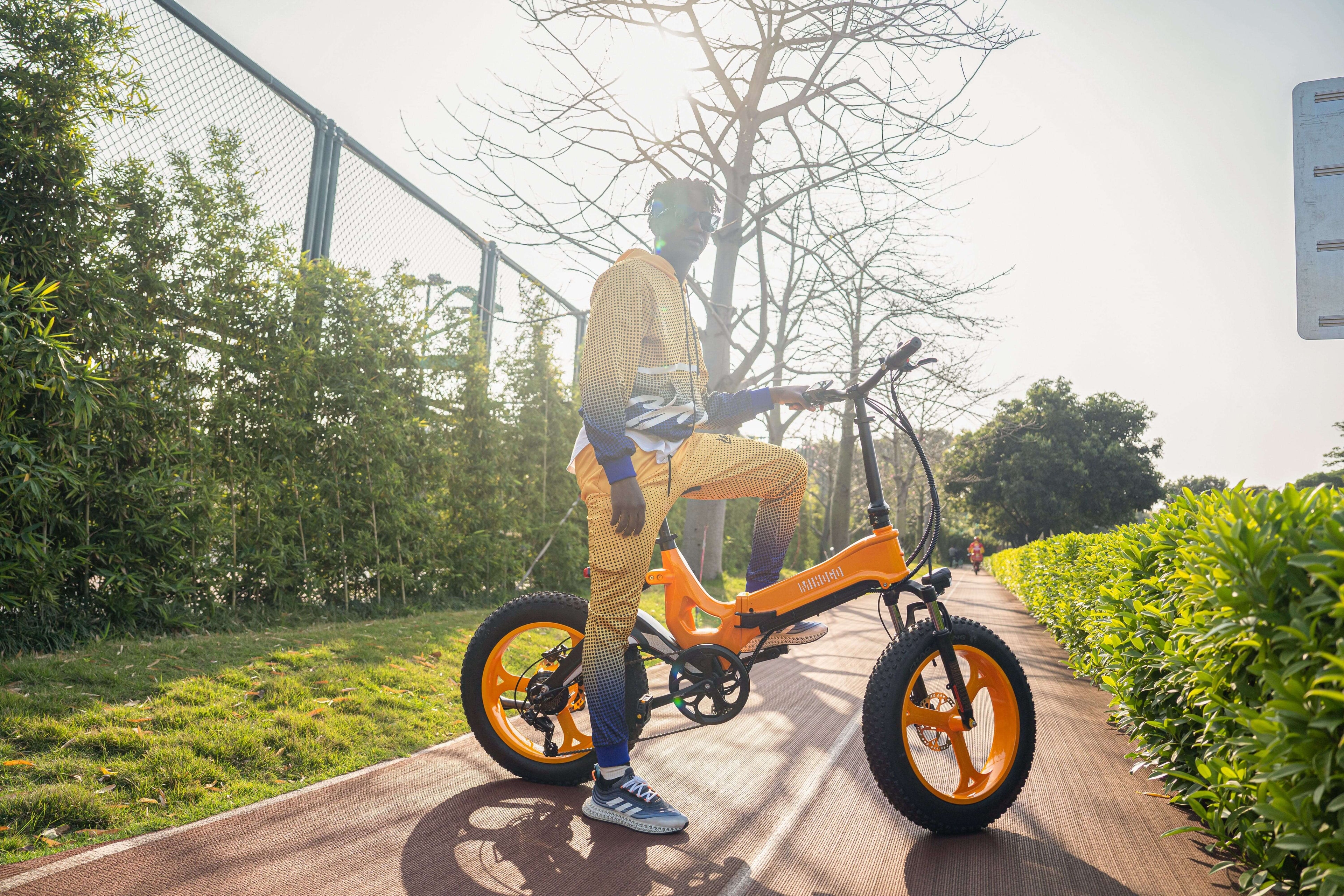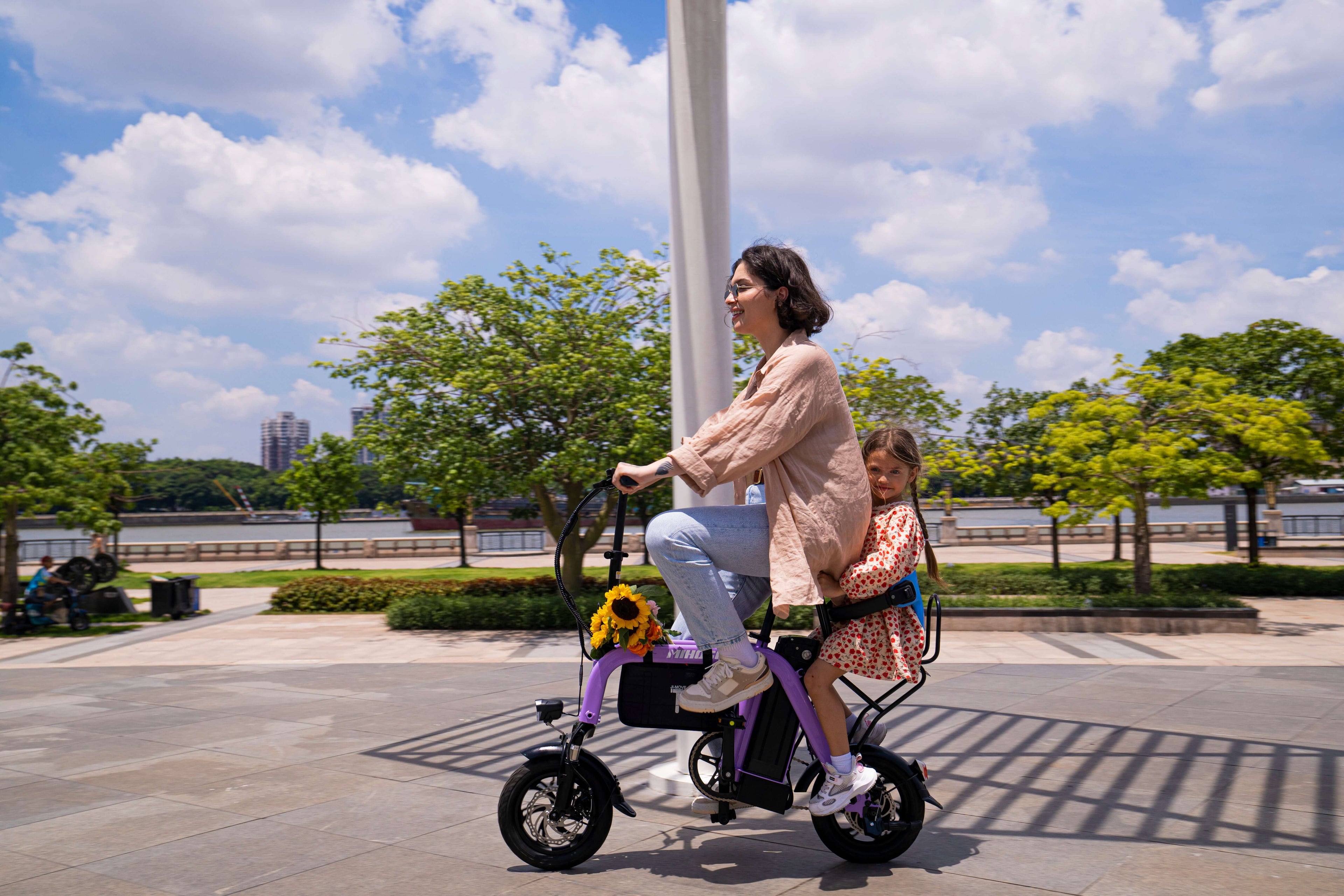Transform Your Daily Commute with the Right E-Bike Route Strategy
Urban commuting has revolutionized dramatically in 2025, with e-bikes leading U.S. commuting trends, combining cost-efficiency, eco-friendly benefits, and innovative features. The key to successful e-bike commuting isn't just having the right bike—it's choosing the optimal route that matches your Mihogo model's capabilities.
Why E-Bike Commuting Dominates 2025 Urban Mobility
The US e-bike market was valued at approximately USD 800 million in 2022. With a compound annual growth rate (CAGR) of around 10%, the market is expected to reach USD 1.2 billion by 2025. This explosive growth reflects a fundamental shift in how Americans approach urban transportation.
Key Benefits of E-Bike Commuting:
- Cost Efficiency: Eliminate parking fees, gas costs, and public transit expenses
- Time Savings: Navigate through traffic congestion faster than cars
- Health Benefits: Low-impact exercise with customizable assistance levels
- Environmental Impact: Significantly reduced carbon footprint compared to vehicle commuting
- Flexibility: Access to bike lanes, paths, and routes unavailable to cars
Mihogo Model Terrain Compatibility Guide
Mihogo Air750 Max: The Carbon Fiber Powerhouse
Best For: Long-distance urban commutes, mixed terrain routes
- Motor Power: 750W for tackling steep city hills
- Range: 121 miles - perfect for extensive daily commuting
- Top Speed: 25MPH for efficient urban navigation
- Rider Height: 5'7" - 6'10"
- Ideal Terrain: Paved roads, bike lanes, moderate hills, long-distance routes
Recommended Routes:
- Business District Commutes: Excellent for downtown-to-suburb routes
- Hill-Heavy Areas: San Francisco, Seattle, Pittsburgh terrain
- Long-Range Touring: 50+ mile daily round trips
Mihogo ONE Utility E-Bike: The Cargo Champion
Best For: Family commuting, cargo hauling, daily errands
- Motor Power: 750W for heavy-load assistance
- Range: 167 miles - industry-leading endurance
- Top Speed: 25MPH with cargo stability
- Rider Height: 5'7" to 6'10"
- Ideal Terrain: Urban streets, bike paths, school routes, shopping districts
Recommended Routes:
- Family School Runs: Safe neighborhood streets with bike lanes
- Grocery and Errands: Commercial districts with ample bike parking
- Mixed-Use Paths: Rails-to-trails conversions, park connector routes
Mihogo RX 2.4: The Compact Commuter
Best For: Apartment living, multi-modal commuting, storage-limited spaces
- Motor Power: 500W for efficient city navigation
- Range: 40 miles for daily round-trip commutes
- Top Speed: 23MPH in compact folding design
- Rider Height: 5'3" to 6'5"
- Ideal Terrain: Flat city streets, bike paths, public transit connections
Recommended Routes:
- Train Station Connections: First/last mile public transit integration
- Urban Core Navigation: Dense city centers with frequent stops
- Office Building Access: Indoor storage, elevator-friendly design
Mihogo Mini: The Urban Explorer
Best For: City centers, recreational riding, budget-conscious commuters
- Motor Power: 350W for lightweight efficiency
- Range: 62 miles for extended city exploration
- Top Speed: 21.9MPH for comfortable urban pace
- Rider Height: 5'1" to 6'4"
- Ideal Terrain: Flat city streets, park paths, recreational trails
Recommended Routes:
- Downtown Circuits: Historic districts, business cores
- Park Connector Systems: Urban greenway networks
- Neighborhood Exploration: Residential area discovery rides
City-Specific Route Optimization Strategies
High-Density Urban Areas
Brooklyn, New York, tops PeopleForBikes' 2025 City Ratings as the best large U.S. city for biking with an impressive score of 72 thanks to dedicated investments in safe and connected places to ride.
Route Selection Priorities:
- Protected Bike Lanes: Seek physically separated cycling infrastructure
- Traffic Signal Timing: Choose routes with bicycle-optimized signal patterns
- Intersection Safety: Avoid high-traffic, complex intersections during rush hours
- Parking Security: Plan routes ending at secure bike parking facilities
Suburban-to-Urban Commuting
Optimal Mihogo Models: Air750 Max, ONE Utility E-Bike
Route Planning Considerations:
- Mixed Infrastructure: Combine residential streets with dedicated bike paths
- Hill Management: Utilize motor power for elevation changes
- Weather Protection: Plan covered rest stops for climate management
- Distance Optimization: Balance directness with safety and comfort
Multi-Modal Integration
Best Mihogo Model: RX 2.4 (folding capability)
Connection Strategies:
- Train Stations: Arrive 10 minutes early for folding and boarding
- Bus Routes: Check transit authority folding bike policies
- Park-and-Ride: Secure parking for longer segments
Route Safety and Infrastructure Assessment
Essential Route Features for E-Bike Commuting
Must-Have Infrastructure:
- Dedicated Bike Lanes: Minimum 5-foot width for e-bike speeds
- Intersection Protections: Traffic signals, crossing signals, sight lines
- Surface Quality: Smooth pavement suitable for higher speeds
- Lighting: Adequate illumination for dawn/dusk commuting
- Drainage: Proper water management to prevent hazardous conditions
Route Evaluation Checklist:
- Traffic Volume: Peak hour vehicle density
- Speed Differential: Difference between bike and car speeds
- Visibility: Clear sight lines at intersections and curves
- Maintenance: Regular infrastructure upkeep and debris removal
- Emergency Access: Alternative routes and safe stopping points
Weather-Adaptive Route Planning
Rain Strategies:
- Covered Segments: Utilize overpasses, covered bike paths
- Surface Considerations: Avoid painted lane markings, metal grates
- Visibility Enhancement: Choose routes with better street lighting
Wind Management:
- Building Wind Tunnels: Avoid downtown corridor wind effects
- Cross-Wind Exposure: Minimize bridge and open area exposure
- Headwind Mitigation: Plan circular routes to vary wind direction
Technology Integration for Route Optimization
GPS Navigation and Route Planning Apps
Recommended Apps for Mihogo Riders:
- Google Maps Cycling: Real-time bike lane updates
- Strava Route Builder: Community-verified safe routes
- Komoot: Terrain-specific navigation for mixed surfaces
- Citymapper: Multi-modal integration planning
Real-Time Conditions Monitoring
Essential Information Sources:
- Traffic Conditions: Live congestion updates affecting bike lane access
- Weather Radar: Precipitation timing for departure planning
- Air Quality: Pollution level monitoring for health considerations
- Construction Updates: Temporary bike lane closures and detours
Advanced Commuting Strategies
Peak Hour Navigation
Rush Hour Optimization:
- Alternative Timing: Flexible schedule adjustment for off-peak travel
- Route Diversification: Multiple path options for varying conditions
- Speed Management: Consistent pacing to match traffic flow
- Predictive Planning: Anticipate bottlenecks and alternative routes
Seasonal Route Adaptation
Summer Strategies:
- Heat Management: Shaded routes, hydration planning
- Extended Daylight: Longer route options with scenic variety
- Increased Traffic: Tourist area avoidance, local route knowledge
Winter Considerations:
- Daylight Optimization: Maximize riding during light hours
- Surface Conditions: Ice-free route prioritization
- Visibility Enhancement: High-contrast clothing, multiple lights
- Emergency Preparedness: Backup transportation options
Long-Distance Commuting
For 20+ Mile Commutes (Air750 Max, ONE Utility):
- Charging Infrastructure: Mid-route charging opportunities
- Rest Stop Planning: Comfort facilities every 10-15 miles
- Nutrition Strategy: Energy management for extended rides
- Mechanical Preparedness: Tool kit and basic repair knowledge
Building Your Perfect Commute Route
Route Testing Protocol
- Weekend Reconnaissance: Explore potential routes during low-traffic periods
- Time Trials: Test route duration during actual commute times
- Weather Testing: Experience routes in various weather conditions
- Safety Assessment: Identify potential hazards and alternatives
- Comfort Evaluation: Assess physical and mental fatigue levels
Community Integration
Local Cycling Communities:
- Bike Advocacy Groups: Connect with local infrastructure advocates
- Commuter Networks: Share route information with fellow riders
- Safety Reporting: Contribute to infrastructure improvement efforts
- Group Rides: Participate in organized commuter events
Professional Development Integration
Workplace Cycling Programs:
- Bike-to-Work Incentives: Employer transportation benefits
- Secure Parking: Advocate for improved bike storage facilities
- Shower Facilities: Negotiate workplace amenities for cyclists
- Flexible Scheduling: Arrange work hours to optimize commute timing
Conclusion: Your Journey to Urban E-Bike Mastery
The transformation of urban commuting through e-bike adoption represents more than just a transportation shift—it's a lifestyle enhancement that combines efficiency, health, environmental responsibility, and pure enjoyment. With around 500,000 e-bikes sold in the US in 2022, projected to increase to over 700,000 units annually by 2025, you're joining a rapidly growing community of forward-thinking commuters.
Your Mihogo e-bike, whether it's the long-range Air750 Max, the versatile ONE Utility, the compact RX 2.4, or the efficient Mini, provides the foundation for this transformation. However, the true success of your e-bike commuting experience depends on thoughtful route selection, safety awareness, and strategic planning.
Key Takeaways for Successful Urban E-Bike Commuting:
- Match your Mihogo model to your specific terrain and distance requirements
- Prioritize safety through infrastructure assessment and route testing
- Integrate technology for real-time navigation and condition monitoring
- Adapt strategies seasonally and for varying weather conditions
- Build community connections for ongoing support and route optimization
Start your urban e-bike commuting journey today by identifying your primary route needs, selecting the appropriate Mihogo model, and beginning with short test rides to build confidence and familiarity. Your daily commute will never be the same.








